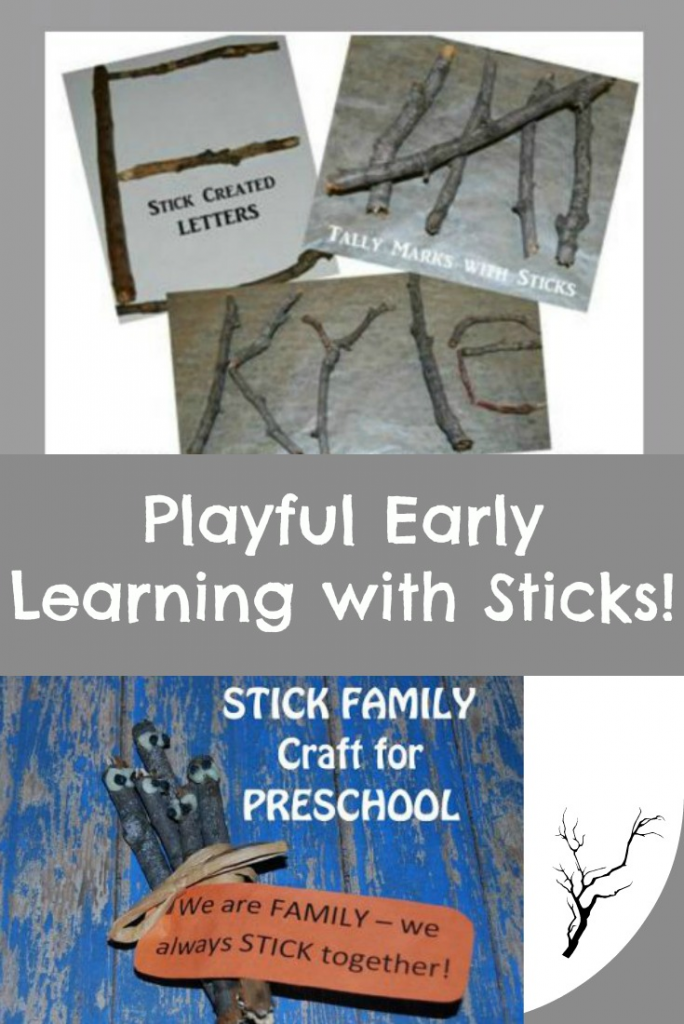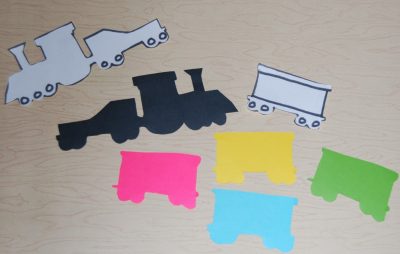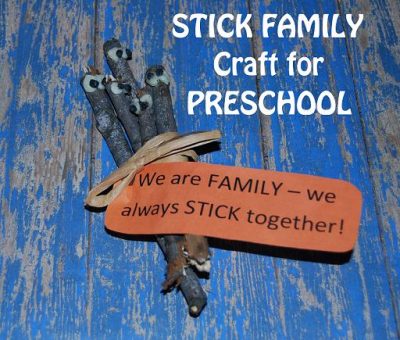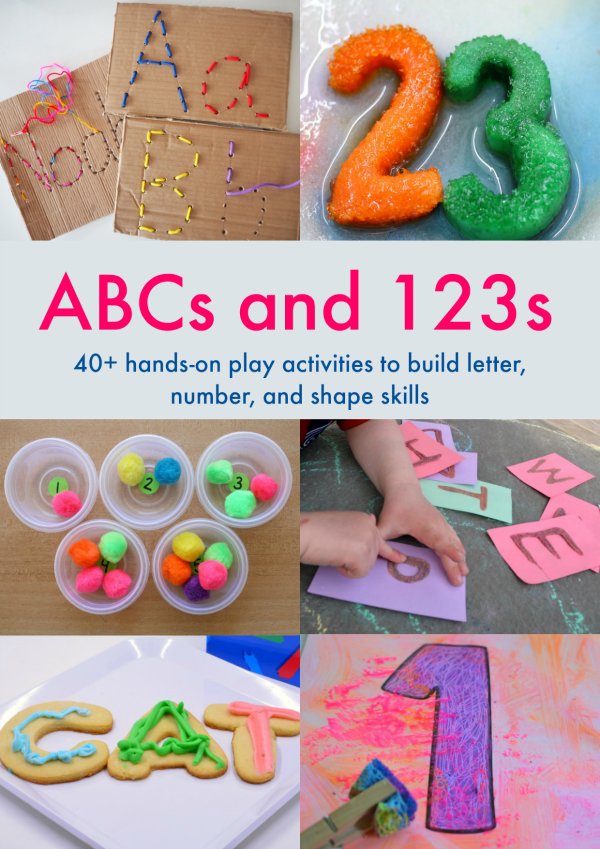Young kids love to be outside! Playing in nature is one of the best ways to encourage healthy development in children. With a little inspiration, parents can capture the child’s love of nature and promote playful learning with…STICKS! Gather some sticks in the neighborhood or your own backyard to provide frugal and fun learning opportunities at home!

PLAYING to LEARN with STICKS
Sticks are AMAZING to young children! Children love to use sticks as pretend play props, to dig in the dirt, to toss in the air, and yes, to hold as they run. Children often hear, “Don’t run with a stick or you’ll poke an eye out!” While some activities are not as appropriate as others for safety reasons, there are many fascinating activities children can do with sticks! Invite your children to collect sticks of various shapes and sizes. Ask your child questions about the sticks and encourage them to share (for example: Are all the sticks the same? What is different about each stick?). Ask the children how the stick feels – is it smooth, rough, or a bumpy stick? By asking questions, parents can open the doors for increased vocabulary and communication skills.
Playful Learning Activities with Sticks
Stick Rhythms
Keeping a beat and creating rhythm patterns are an important part of growth and development for young kids. Learning rhythms and patterns will help reinforce the cadence necessary for early reading skills.
Materials needed: Sticks and an empty oatmeal container or margarine tub.
Help your child break a stick into a size that is easily handled (a piece similar to a short drum stick). Clap out a pattern and invite your child to “echo” that same pattern by tapping the container with the sticks. As your child gains confidence in hearing the various patterns, try clapping the syllables in the names of family members. Your child can then tap back the syllables with sticks on the container. To practice keeping a beat to music, play your child’s favorite music and invite your child to tap the container along with the rhythm of the song.
Stick Names or Letters
First words and letters are a crucial part of early literacy for children. Some of the first words that a child will know are the names of family members or their own. Using sticks to create names will capture the interest of your child and help cement letter concepts in a hands-on way. Small sticks also work well in creating letters for the sensory name train here (train and engines are free to print).

Materials needed: sticks.
Help your child break longer sticks into smaller pieces. Invite your child to create any letter they know with the stick pieces. For younger children, make any letter in the child’s name and see if the child can re-create the letter using the sticks. Older children can practice making their names or other words they know using sticks. As an extension activity, kids can also try creating letters or their names in dirt or sand by using a stick as a writing tool.
Stick Numbers and Tally Marks
Incorporating early math skills into daily routines is necessary for a good math foundation. Using sticks to count and create numbers is a fun way for kids to learn as they play.
Materials needed: sticks.
Again, help your child break longer sticks into manageable pieces. Invite your children to count various items they see while playing outside (examples: 4 flower petals, 10 leaves, 2 trucks, 5 rocks, etc.). Have your child create any number with sticks. For a younger child, an adult (or older child) can create a number with the sticks. The younger child would then try to re-create (copy) that same number with sticks. Older children can create numbers independently.
It is also fun to make tally marks with sticks and introduce basic counting in sets of five. Invite your child to place four sticks close together on the ground or a table. Count each stick out loud as they are laid side-by-side. The fifth stick then goes diagonally across all four sticks to create one set of five (see photo above). As your child gains confidence in creating the tally mark set of five, other sets can be made to encourage counting by 5’s (see here to print a tally mark rhyme to chant as your child discovers counting with sticks).
Exploring playful learning in nature offers powerful opportunities for children. With just a little creativity and imagination, parents can enhance natural play and provide playful learning activities right at home.
If you missed the first post in the nature series on Playing to Learn with ROCKS, you can see it here! Next week, we’ll be sharing playful learning in nature with LEAVES. Be sure to check back or subscribe to the blog on the right!
Disclosure: this post and others within this blog may contain affiliate/distributor and or sponsored content/links. Please see here for full disclosures.
 Your kids might also enjoy creating a stick family – “We are FAMILY – we always STICK together!”
Your kids might also enjoy creating a stick family – “We are FAMILY – we always STICK together!”
For more ways to PLAY and LEARN, see our collaborative ABC’s and 123’s eBook! The book is available for immediate download and contains activities for teaching the ABC’s and 123’s to kids. The activities have been carefully chosen to offer a wide range of math and literacy skills, working across the curriculum to incorporate play, imagination, science, sensory, and art. When kids are challenged to use critical thinking and to problem solve while PLAYING, they gain skills to last a lifetime.

